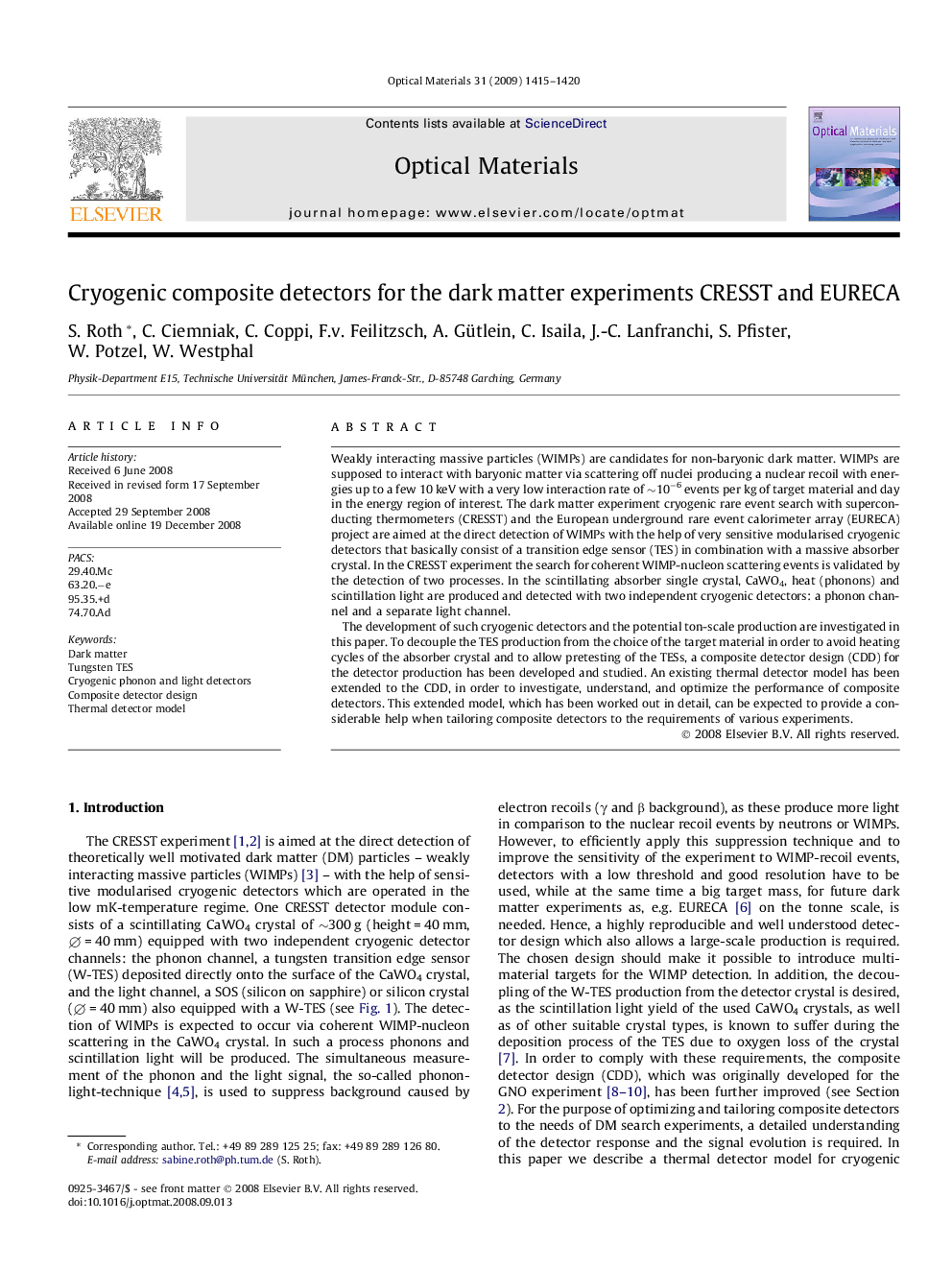| Article ID | Journal | Published Year | Pages | File Type |
|---|---|---|---|---|
| 1496178 | Optical Materials | 2009 | 6 Pages |
Abstract
The development of such cryogenic detectors and the potential ton-scale production are investigated in this paper. To decouple the TES production from the choice of the target material in order to avoid heating cycles of the absorber crystal and to allow pretesting of the TESs, a composite detector design (CDD) for the detector production has been developed and studied. An existing thermal detector model has been extended to the CDD, in order to investigate, understand, and optimize the performance of composite detectors. This extended model, which has been worked out in detail, can be expected to provide a considerable help when tailoring composite detectors to the requirements of various experiments.
Related Topics
Physical Sciences and Engineering
Materials Science
Ceramics and Composites
Authors
S. Roth, C. Ciemniak, C. Coppi, F.v. Feilitzsch, A. Gütlein, C. Isaila, J.-C. Lanfranchi, S. Pfister, W. Potzel, W. Westphal,
